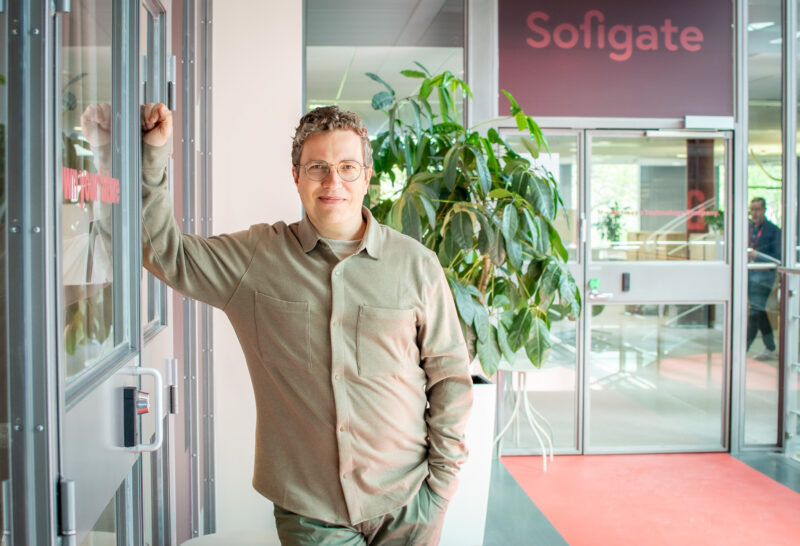Necessary evils or useful friends? – How HR systems should work in 2021
“HR systems should be blown up – and while we’re at it, the whole HR function at the same time,” state Sofigate’s experts Elina Seppänen and Susanna Grundström. Both have extensive experience in both HR and HR technology consulting and will now reveal how to turn HR into a truly digitally capable core function.
Raise your hand if you have ever seen a well-functioning human resource management system. Very few of us have. Much too often these systems slow down everyday life rather than make it easier.
However, the systems are only the tip of the iceberg: in many organisations, human resource management is still seen as a sluggish support function, whose key tasks include running the office party committees in addition to payroll and other mandatory routines.
It is time to bring these assumptions up to date, as we are talking about a function whose core mission is more critical than ever: without people, there is no business. HR supports the company’s strategy by ensuring that the best possible expertise is used. The task will not become easier over time, as the “boomer” generation is entering their retirement years and competition for skilled labour further intensifies.
Although people are at the heart of HR, it is time to open our eyes to the fact that everything in HR operations relies on systems. Technology and HR are inseparable so that a company can recruit, resource, or actually do anything at all that is human-related.
It is about time for HR to take an interest in technology and finally take ownership of their own systems. But how can you combine human expertise – the undeniable strength and value of HR – with a complex and accelerating technology ‘hurricane’?
It is possible, but it requires a new way of thinking both in HR, and in information management and business. Here are our main points:
1. Functional technology is available if you are willing to re-evaluate your own ways of working
HR systems – or the more modern name, HCM systems – continue to be actively hated. The haters are both the business function and the HR function itself. In 2020, systems should no longer be that difficult, as technology has evolved tremendously. Why are we still banging our heads against the wall with them?
The world is full of failed deployments and systems that do not serve anyone’s interests. There are certainly many reasons for this. One big reason – which we well recognise when working in HR – is that HR sees systems only as IT’s responsibility. Very rarely is HR responsible for its own systems. The HR manager is busy, and there is no time left to be interested in the capabilities of the systems. Only quite recently have systems evolved so that they can be used for management without hours of wondering about their functionalities. No wonder that there has been a lack of faith before.
Another typical problem is that systems are over-customised. HR wants the company’s processes to be defined in the systems as they are, because “the business requires this”. The result is a stiff system that forces to act as always before.
World-class technology solutions are available and astronomical sums are being invested in their development. Even the best technology alone will not solve anything. Its benefits only come true when we also change the way we act – that is, people’s behaviour and processes.
Realising this issue opens up the possibility of leveraging global technology platforms (such as Oracle HCM, SuccessFactors, or Workday). Their workflows, which are based on best practices, are different from the company’s current process, and this contradiction is painful for many. So it’s time to look in the mirror and start developing new ways of working.
-
Automate routine work and reimagine the HR function
Service design, UX design and Agile are familiar concepts to HR people. What if we made an evolutionary leap within our own HR silo and developed our own function in such way that the business units would be jealous of us?
Will the whole function be reinvented? The best way to get permission to detach yourself from menial tasks and from only serving others is to develop your own team into being so effective, capable, and strategic that others will look to you as an example.
Another way to see this reimagining of HR could be about how to automate administrative work so that it would not disrupt everyday life. You must also consider how to predict and manage issues that are either threats or opportunities to the business. This requires the input of HR people as co-creators of strategy, not just as strategy implementers and service providers.
-
Mass problem-solving
At the same time when you are becoming frustrated with a dysfunctional HR system, so is somebody else next door. Every company struggles with the same challenges.
There should be more effort to create and measure employee experience. The corona pandemic challenges everything we know about leading people and organisations. In which way can we adapt our know-how to the needs of an ever-changing world?
Everyone has their own answers to these questions, and it takes a lot of time to find them. What if the challenges of the new normal were not to be solved alone, and instead we could combine our thoughts and ideas?
Should we start leading HR according to the principles of open source and really share our thoughts as well as our practices?
We at least are ready for it – will you join us?
About the authors:
Elina Seppänen is Sofigate’s Senior Advisor with long experience in both the HR and IT worlds. Elina and her team build bridges between units that speak different languages. Elina’s passion is to make HR a part of business through technology.
Susanna Grundström is Sofigate’s Senior Advisor, who is passionate about leading HR work into the digital age through service design. She leads Sofigate’s team focused on managing employee experience.


